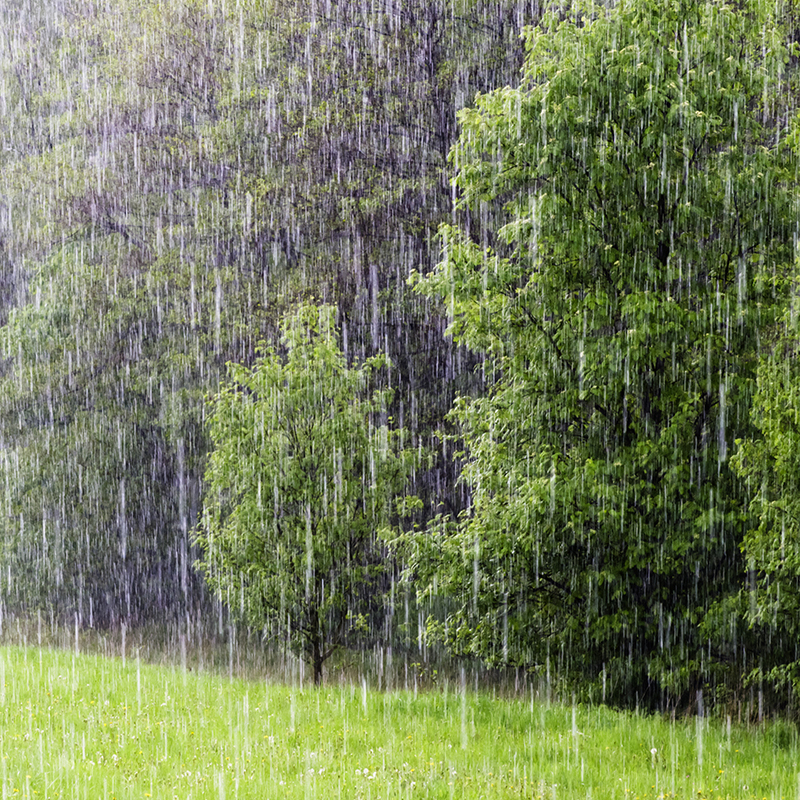Watering Your Lawn
Your lawn needs less water than you think. If you have healthy soil (and follow the other tips on this site ), then your lawn will only need watering during extreme drought.
If your grass looks bluish-green, or your footprints remain in the grass long after you walked on it, then your grass probably needs water.
Tip #1:
In mid-summer heat, lawns with fescue, rye or bluegrass should be allowed to go dormant and will turn brown until cooler weather.
Tip #2:
Water infrequently, but deeply.
 Photo by sakhorn38, 123RF
Photo by sakhorn38, 123RF
Watering best practices
Shallow and frequent watering actually encourages weeds, so watering should be done infrequently, and saturate deep into the soil.
The best time to water is actually right after a light rain—when natural rain has pre-saturated the soil, the water you add is less likely to run off, and will provide the deep soaking that the soil needs.
If you cannot water after a rain, pre-soak your lawn with water, kick back on a lawn chair for a bit while it soaks in, then head back out to add more water.
If using a sprinkler, be sure water doesn’t run off your lawn, and choose a pulsating or oscillating sprinkler, depending on the shape of your lawn.